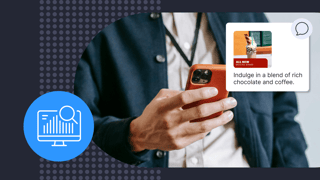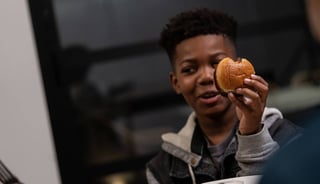
This article outlines:
Getting tech and data in order
Creating segments for personalized marketing
Mastering automations
For marketing teams at emerging restaurant brands, data-driven marketing ends up as just another thing on the “nice-to-have” board, shoved aside by the immediate needs of promotions, ads, or social media.
Still, restaurant marketers often know this isn’t something to kick the can on—you probably saw that article from Harvard Business Review about how data-driven decisions help restaurants succeed. Continuing to use outdated strategies like “batch and blast” marketing might lead to problems that are difficult to recover from: distrust or annoyance from guests and damaged sender reputation.
But how do you get started? If you’re an emerging restaurant brand with a dozen or so locations and high growth, what data do you need, and where does it live?
With over a decade working on performance and data-driven marketing teams, I've been able to help brands accelerate their growth along the digital maturity curve. I created this maturity curve to represent two key points: 1) every brand has to start somewhere and ROI can be recognized immediately with the right approach 2) using guest data to drive measurable outcomes becomes more fruitful as you mature your strategy.

In short: getting started with data-driven marketing is not as difficult as you think, and it will return rewards sooner than you expect.
Here are the simple steps to start an impactful data-driven marketing program that you can scale.
Step One: Get tech and data in order
First up — you’ll need guest data. This could come from sources like loyalty programs, email signups, or marketing software.
(I’ll add the caveat that loyalty programs and email signups will only provide a fraction of guest interactions, maybe the 10-15% of guests who sign up, whereas Olo Engage GDP will connect the dots across nearly all of your guest interactions.)
Ideally, you'll want to have as many inputs flowing into your source of truth (e.g. your GDP) to make it ripe for the opportunity to connect with them more personally. Imagine knowing all of this (and more) about your guests:
- Order preferences
- In-person sales
- Online sales
- Which stores they visit
- When they visit
- How frequently they visit
- How much they are spending
Again, all of that information should be in one place. An Excel sheet won’t work here—hunting for data in disparate sources and trying to combine it all is too big of a project for any person.
Having all this information about guests will likely help you make better smarter decisions, generally—not just implement marketing strategies—as you’ll see in the case study below. And, data-driven marketing is not just for individuals. It can be used to identify catering opportunities and provide a personalized experience for that channel.
Next, you’ll need to be able to segment guests. Being able to target guests that meet certain criteria is critical for effective data-driven marketing, so if you’re still using a bare-bones system that doesn’t support segmentation, it’s time for an upgrade.
Case Study:
Fast-growing pizza brand realizes email addresses aren’t enough to market
As a beloved quirky pizza parlor started to grow, they realized their basic email marketing provider wasn’t cutting it. The brand had never segmented its audience before, and available customer data was mostly limited to email addresses. As the brand expanded, it wanted a more complete picture of their operations—not just for marketing, but to understand where to open new locations and how to optimize their menu.
By implementing Olo Order and Engage, the brand had access to a treasure trove of data and created more robust guest profiles that included the guest’s name, birthday, email, and what they like to eat. This allowed them to create a much more personalized experience to make the guest feel more valued, like offering a birthday treat or personalizing online order recommendations. The brand expects to see results from these insights in just 60 days.
Step Two: Create your segments
Here is where the magic starts to happen. At this point, you're ready to start segmenting your guests to deliver them personalized campaigns and journeys.
We’ve written elsewhere about Segmenting 101, but as a reminder, here are some great guest segments to get started:
- High-value guests: A good baseline is guests in the top 10% of spending.
- Loyal guests: Guests who come in regularly, order often, and open most of your emails.
- Lapsed guests: Guests who used to visit frequently but haven’t in the last 6 months.
- New guests: First-time visitors to your restaurant should feel like the red carpet is rolled out for them!
As you get more familiar with segmentation, you can get much more granular in targeting guests: guests who exclusively order online, guests in a certain area, guests who only come for lunch, etc.
Case Study:
Pan-Asian restaurant starts segmenting
A fast-growing Pan-Asian restaurant had expanded to over 20 locations in their state. However, the brand wasn’t using a marketing or customer data platform tool, and their email marketing strategy was to send every email to every guest. The brand realized guest data would become necessary as it expanded and selected Olo Marketing + GDP with Professional Services.
With the initial goal of increasing guest frequency, the Professional Services team started creating cohorts and coming up with strategies. The brand had never been able to easily access information like average guest frequency until using Olo Engage, so this was new territory. The Professional Services team helped the brand explore options that made sense for their business model, like gamification (creating “challenges” for lapsed guests) or a change to the loyalty program.
Step Three: Automate and profit
Successful automations are the best kind of marketing—after they are set up, they require minimal maintenance from you. So, they’re ideal for small teams with stretched resources trying to get started with data-driven marketing.
One easy example of automation is a welcome series for new guests. This could be a few emails spread across 60 days or so that introduce your brand, promote popular products, request feedback, and invite guests to opt-in to text messaging or follow on social media.
For a deeper dive into marketing automations, plus more examples of automations, check out our Guide to Marketing Automations.
Case Study:
First Watch finds success with automations
Brunch chain First Watch implemented a data-driven marketing plan to entice new customers. Based on data from Engage, it determined the optimal time to reach out to guests was 14 days after the first visit. First Watch set up an automation that sent an invitation to come back in after 14 days. 57% of people who opened that email visited the restaurant again, resulting in $2.7M spent by guests within 90 days of receiving an automation.
Still feeling lost?
Restaurant marketing teams can often just be one person who simply doesn’t have the time or resources to set up and execute these plans. That’s where Olo Professional Services can help.
The Professional Services team is made up of marketing experts with years of restaurant-specific experience, like myself, who will help you maximize your investment in Olo Engage. Every Engage plan includes Professional Services hours to help you identify your goals and set up proven strategies so all you have to do is sit back and watch the machine work.
To learn more about Engage and Professional Services, request a demo.

